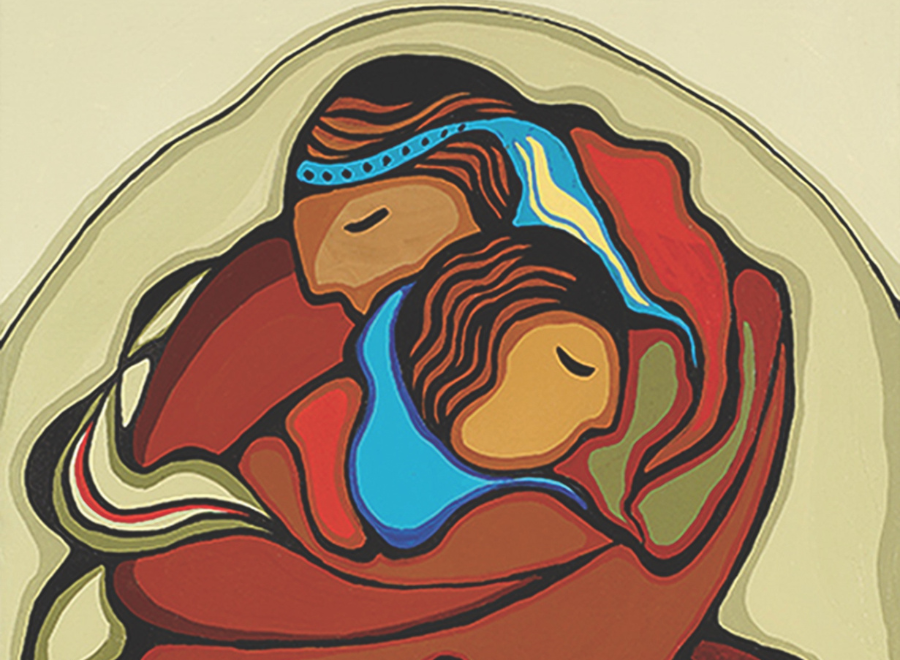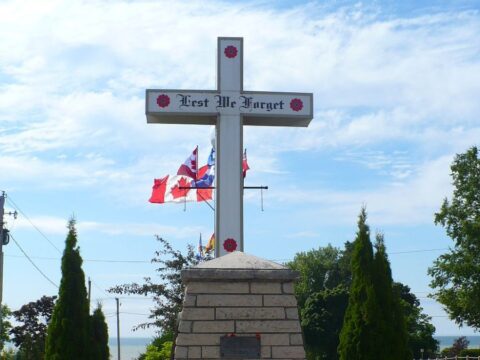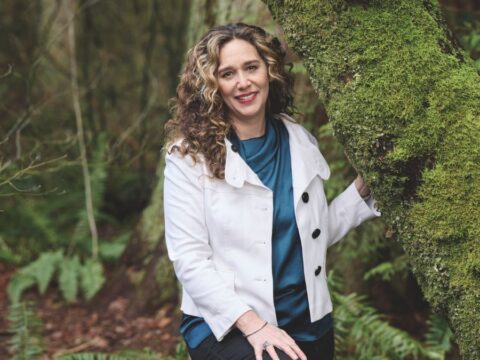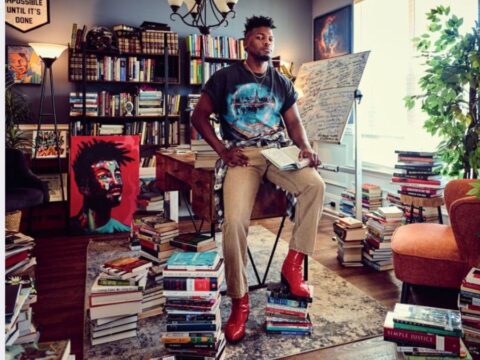“How do you destroy a woman? You take away her children.”
So says John Rice, an Anishinabe healer and storyteller who spoke last October in Barrie, Ont., at a workshop I attended on Aboriginal justice. His words have stayed with me. I would venture to say they resonated with every woman, every mother — most of them non-Indigenous — in the room that day.
You may unsubscribe from any of our newsletters at any time.
Rice was talking, of course, about the hundreds of Native women who had their children literally stolen from them and placed in residential schools when the Canadian government decided, in the words of then deputy superintendent of Indian Affairs Duncan Campbell Scott, “to destroy the Indian in the child.” To destroy a culture, especially a matriarchal one, one must destroy the women. As any mother will tell you, the presence of her children in her life is integral to her presence of mind. Take them away and you destroy her.
The magnitude of the pain that the Canadian government, with help from churches, inflicted on Aboriginal parents when they took their children away is hard, if not impossible, to grasp. I first began to research the history of Indian residential schools around the same time that I, a woman of English, Irish and Métis descent, became a mother myself. As I held my newborn daughter in my arms and felt that incredible, indescribable bond — that euphoric feeling of seamless integration with another human being — I would wonder how (or if) I would survive the experience of having her taken away.
What happenened to the Aboriginal women whose children were wrenched from them? Their fates are relatively undocumented. While we know something of the trauma their children endured, there are no statistics, and little in the way of stories, that give voice to maternal loss.
In his memoir Indian School Days, Basil H. Johnston describes the weeping of mothers and grandmothers overcome with “helplessness and heartache.” “There was nothing,” he writes, “absolutely nothing they could do, as women and as Indians, to reverse the decision of ‘the Department.’”
While I imagine that some women died a physical death from suicide or drug overdose, most must have died a kind of spiritual death — for when they lost their children, they also lost their roles as keepers of the culture. Their grief defies our comprehension.
Of course, according to the terrible logic of colonialism, the residential school policy makes a whole lot of sense. After all, Aboriginal cultures were historically women-centred: they affirmed the value of the cultural work women do to make sure the next generation inherits the language and traditions. “What do women do from the moment they give birth?” Rice asks. “They talk to their children. They teach them everything they know.” So women were accorded a sacred place among First Nations. They were the powerbrokers, the decision-makers.
All of that changed with colonialism. When the first European explorers arrived in North America, they asked to speak to the Aboriginal leaders. In Rice’s humorous retelling, when they were presented with female leaders, the confused Europeans said again, “No. Bring me your leaders.”
Disbelief and disapproval about the place of women would continue to mark Native-settler interactions. Christian missionaries lamented the strength of Aboriginal women, seeing matriarchy as a sign of heathenism.
As the late American Indian scholar and poet Paula Gunn Allen writes in her book The Sacred Hoop, the Jesuit missionaries introduced a new social hierarchy where “a woman’s proper place was under the authority of her husband and a man’s proper place was under the authority of the priests.” Whatever the intentions of the policymakers when they made it illegal for Aboriginal parents to keep their own offspring, removing children from their mothers’ protection was a surefire way to destroy women who were the very centre of their cultures, the pillars of entire communities.
None of this is to say that things were perfect for First Nations people before colonialism. Rice will be the first to tell you that atrocities were committed before the Europeans came. But he will also tell you that the single most tragic fallout of colonialism is the loss of Aboriginal women.
Aboriginal women are missing. To say this isn’t just a figurative way of talking: many are, in fact, literally missing. The Native Women’s Association of Canada counts more than 600 disappearances and murders of Aboriginal women in this country over the past 30 years, most of which have gone unreported in the mainstream media and uninvestigated by police. According to Statistics Canada, Aboriginal women 15 years and older are three-and-a-half times more likely to experience violence than non-Aboriginal women and three times more likely to experience spousal assault.
These tragic numbers point to a stark reality: the brutality that Aboriginal women have historically suffered is still very much a part of their lives today, threatening their physical, emotional and spiritual well-being.
A few days after listening to Rice’s stories, I participated in a Sisters in Spirit vigil, one of hundreds of peaceful demonstrations that take place across this country every October to honour the missing Aboriginal women — daughters, sisters, mothers, aunties, grandmothers and friends — who have mysteriously disappeared. As I held hands in a show of solidarity with women of various ages and backgrounds, Rice’s call to action — his cry to restore the women of Aboriginal cultures to their sacred place — moved my feet forward and guided my vision for the future.
To fight for a better future for Aboriginal peoples is to recognize the connections between past and present, and between sexism and racism. The residential school legacy is far from over; it’s linked to the ongoing oppression of Aboriginal women today. Aboriginal kids are still taken from their mothers in overwhelming numbers.
According to Cindy Blackstock, executive director of the First Nations Child and Family Caring Society of Canada, there have never been more Aboriginal children in foster care than there are now. While there were 9,000 children institutionalized in residential schools during the 1940s, estimates place the number of children currently in care at around 27,000.
If you do the math, as Blackstock has, that translates into roughly three times more Aboriginal kids in care in the 21st century than there were in residential schools at the height of their history. It also means that, as child welfare statistics collected by three provinces show, one in 10 First Nations children is in alternative care as compared to about one in 200 non-Aboriginal children. These numbers demand our attention. They stand for young, vulnerable children who deserve better.
And yet, the promise of a better life is precisely the government’s justification for their removal. But it’s a promise that isn’t always delivered. Removal is all too often accompanied by profound cultural loss and identity confusion. Even if the connections to culture remain alive, most foster or adoptive families have no way of identifying with the racism and prejudice that Aboriginal kids inevitably encounter.
Why are they removed in the first place? Perhaps surprisingly, the reasons for their overrepresentation in the foster-care system have nothing to do with higher rates of abuse or domestic violence. They have everything to do with neglect — an upshot, Blackstock says (with a nod to national studies), of a serious failure to tackle structural issues like poverty, poor housing and substance abuse. What infuriates those on the front lines of child protection work is that the situation is entirely preventable. But funding arrangements don’t focus on prevention; their concern is ultimately with placement.
In an essay aptly titled “Reconciliation Means Not Saying Sorry Twice,” Blackstock explains further: “The child welfare system is designed to intervene at the level of children and their families, but the structural risks for Aboriginal children are primarily sourced at a societal level.” In other words, the system isn’t really set up to address these bigger social problems — problems that exceed its capacities and tax its limited resources. The system offers merely a bandage solution to the huge, festering wound of colonialism.
Let’s not lose sight of the multiple traumas that have created this wound: the loss of land, decimation of the population by epidemics, removal to reserves and forced assimilation, to name but a few. Residential school survivors are poorly equipped to parent, having never been adequately parented themselves, and a parenting class isn’t going to fundamentally change that — especially in cases where substance abuse has become a means of coping with unbearable memories. Add to that the impoverished conditions found on most reserves due to government underfunding — now finally being brought to the attention of non-Indigenous Canadians following the Attawapiskat scandal — and you have the disaster of kids being wrenched away from their parents, communities and cultures.
In the face of such huge, intractable problems, it’s easy to throw up one’s hands and say, “Hey, it’s not my problem!” But it is our problem. It’s a national problem — no, a national catastrophe — for which non-Indigenous Canadians must take collective responsibility. When the United Church issued its own historic apology to the survivors of residential schools, its members owned up to that responsibility. With the hearings of the Truth and Reconciliation Commission well under way, now is the time to act. Now is the time to begin the long and arduous journey toward reconciliation.
The journey begins with listening. Rice taught me that. His stories are gifts, as are the testimonies of survivors. They are gifts that offer us the chance to begin on a transformative pathway toward peace and justice. In her book Unsettling the Settler Within, Paulette Regan, director of research for Canada’s Truth and Reconciliation Commission, argues that the project of reconciling will only succeed if non-Indigenous Canadians receive these gifts with “humility, respect and a genuine willingness to learn from the other.” The Idle No More movement, which — remarkably — is being led by young and educated First Nations women, invites non-Indigenous Canadians to refuse to be idle in the quest to “know more” from and about the original inhabitants of this land.
I close, then, by reissuing that invitation. I invite non-Indigenous readers to avoid dismissing or denying their complicity in Canada’s colonial legacy. I ask you to work in respectful, humble collaboration with Indigenous peoples to promote human dignity and freedom, even if it means leaving your comfort zone or facing disturbing truths. To do so is to reclaim our humanity and recover hope for a better world.
Julie McGonegal is a writer and editor in Barrie, Ont.
***
This story first appeared in The United Church Observer’s March 2013 issue with the title “Embracing our Aboriginal sisters.”















